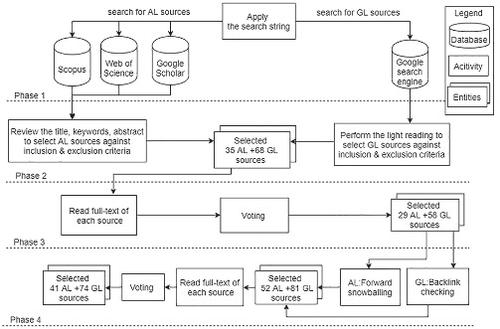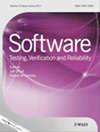Improving test automation maturity: A multivocal literature review
IF 1.2
4区 计算机科学
Q3 COMPUTER SCIENCE, SOFTWARE ENGINEERING
引用次数: 4
Abstract
Mature test automation is key for achieving software quality at speed. In this paper, we present a multivocal literature review with the objective to survey and synthesize the guidelines given in the literature for improving test automation maturity. We selected and reviewed 81 primary studies, consisting of 26 academic literature and 55 grey literature sources. From primary studies, we extracted 26 test automation best practices (e.g., Define an effective test automation strategy, Set up good test environments, and Develop high‐quality test scripts) and collected many pieces of advice (e.g., in forms of implementation/improvement approaches, technical techniques, concepts, and experience‐based heuristics) on how to conduct these best practices. We made main observations: (1) There are only six best practices whose positive effect on maturity improvement have been evaluated by academic studies using formal empirical methods; (2) several technical related best practices in this MLR were not presented in test maturity models; (3) some best practices can be linked to success factors and maturity impediments proposed by other scholars; (4) most pieces of advice on how to conduct proposed best practices were identified from experience studies and their effectiveness need to be further evaluated with cross‐site empirical evidence using formal empirical methods; (5) in the literature, some advice on how to conduct certain best practices are conflicting, and some advice on how to conduct certain best practices still need further qualitative analysis.

改进测试自动化成熟度:一个多语种的文献综述
成熟的测试自动化是快速实现软件质量的关键。在这篇论文中,我们提出了一个多语种的文献综述,目的是调查和综合文献中给出的指导方针,以提高测试自动化的成熟度。我们选择并回顾了81项初步研究,包括26篇学术文献和55篇灰色文献。从最初的研究中,我们提取了26个测试自动化最佳实践(例如,定义一个有效的测试自动化策略,建立良好的测试环境,开发高质量的测试脚本),并收集了许多关于如何执行这些最佳实践的建议(例如,以实现/改进方法,技术技巧,概念和基于经验的启发式的形式)。研究结果表明:(1)目前仅有6种最佳实践对企业成熟度提升有积极影响,并得到了学术研究的实证评价;(2)该MLR中若干技术相关的最佳实践未在测试成熟度模型中提出;(3)一些最佳实践可以与其他学者提出的成功因素和成熟度障碍联系起来;(4)关于如何实施建议的最佳实践的大多数建议是从经验研究中确定的,其有效性需要使用正式的经验方法通过跨站点经验证据进一步评估;(5)在文献中,一些关于如何进行某些最佳实践的建议是相互矛盾的,一些关于如何进行某些最佳实践的建议还需要进一步的定性分析。
本文章由计算机程序翻译,如有差异,请以英文原文为准。
求助全文
约1分钟内获得全文
求助全文
来源期刊

Software Testing Verification & Reliability
工程技术-计算机:软件工程
CiteScore
3.70
自引率
0.00%
发文量
34
审稿时长
>12 weeks
期刊介绍:
The journal is the premier outlet for research results on the subjects of testing, verification and reliability. Readers will find useful research on issues pertaining to building better software and evaluating it.
The journal is unique in its emphasis on theoretical foundations and applications to real-world software development. The balance of theory, empirical work, and practical applications provide readers with better techniques for testing, verifying and improving the reliability of software.
The journal targets researchers, practitioners, educators and students that have a vested interest in results generated by high-quality testing, verification and reliability modeling and evaluation of software. Topics of special interest include, but are not limited to:
-New criteria for software testing and verification
-Application of existing software testing and verification techniques to new types of software, including web applications, web services, embedded software, aspect-oriented software, and software architectures
-Model based testing
-Formal verification techniques such as model-checking
-Comparison of testing and verification techniques
-Measurement of and metrics for testing, verification and reliability
-Industrial experience with cutting edge techniques
-Descriptions and evaluations of commercial and open-source software testing tools
-Reliability modeling, measurement and application
-Testing and verification of software security
-Automated test data generation
-Process issues and methods
-Non-functional testing
 求助内容:
求助内容: 应助结果提醒方式:
应助结果提醒方式:


